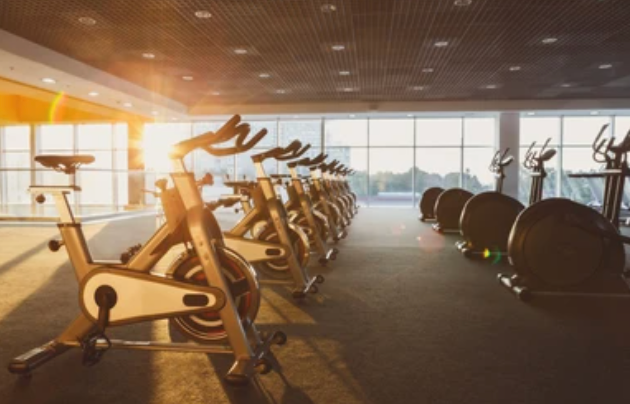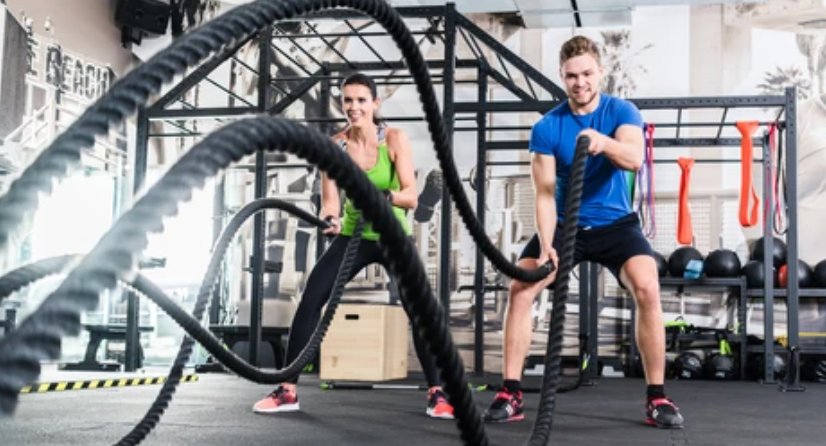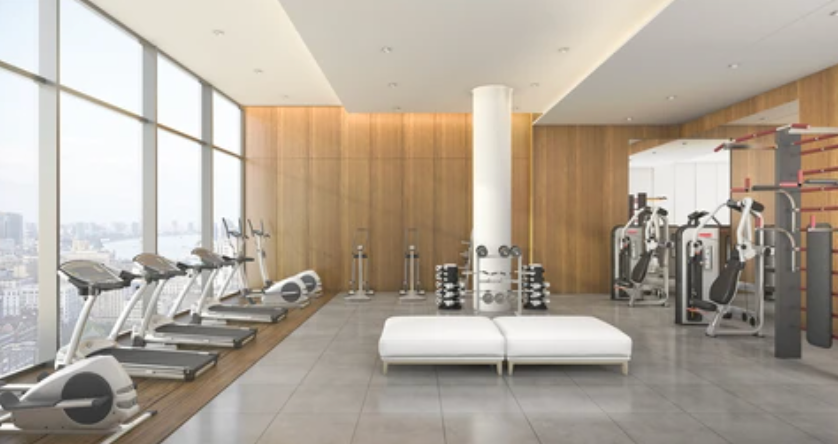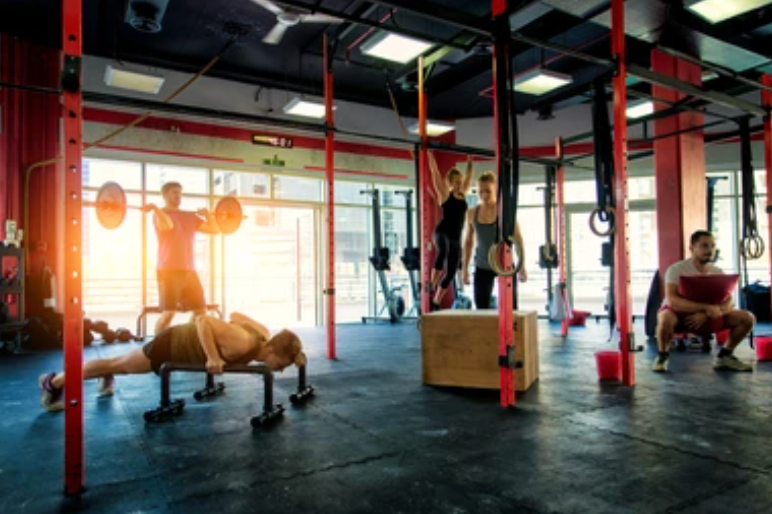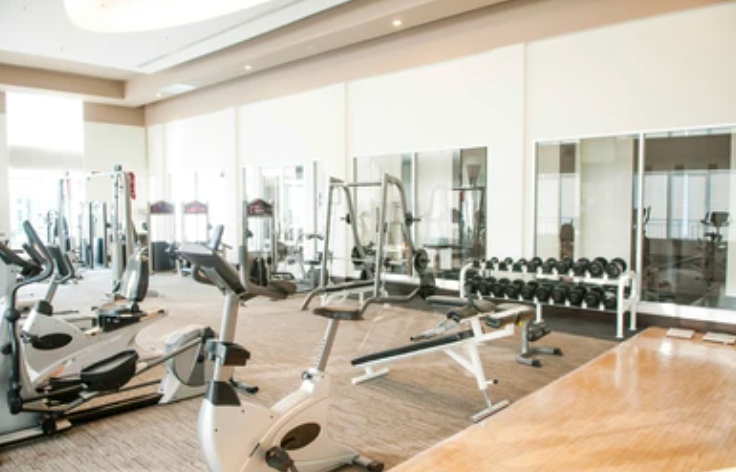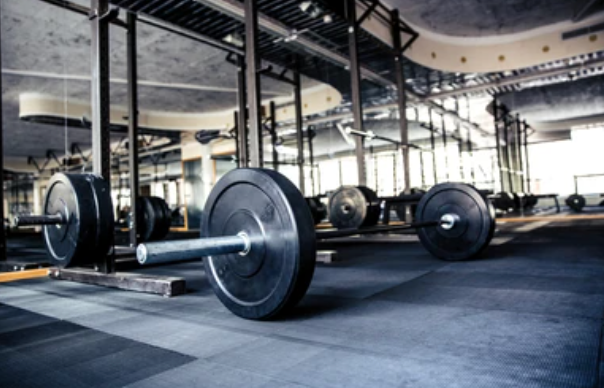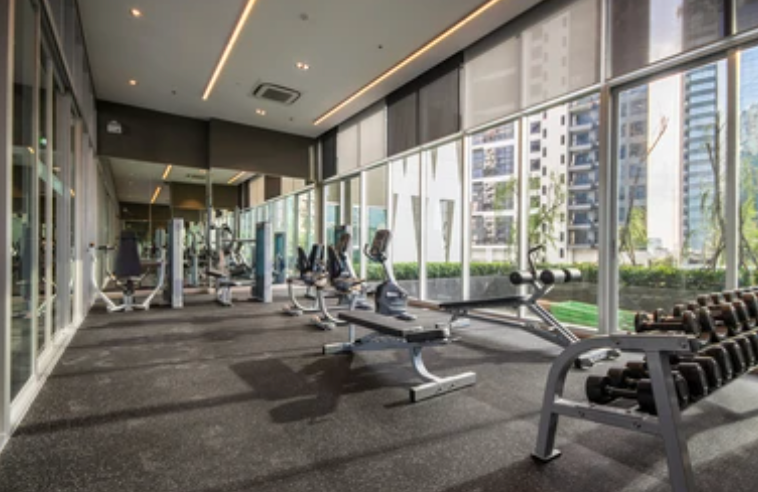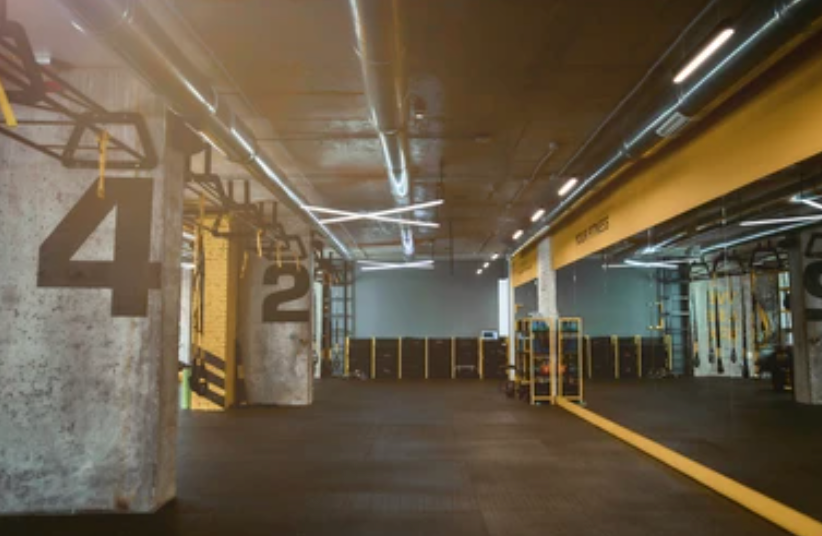Have you ever dreamed of creating the perfect gym space in the comfort of your home or as a thriving commercial venture? In today’s health-conscious world, the appeal of a personalized fitness sanctuary proliferates. Whether carving out a small workout corner in your apartment or designing a state-of-the-art fitness facility, the journey begins with a well-thought-out plan.
Designing a gym is about more than just stacking equipment into a room. It’s an art that blends functionality, aesthetics, and personal or client needs into a cohesive and motivating environment. A well-designed gym can be the cornerstone of a healthier lifestyle or a successful business. But where do you start? What costs are involved, and how do you ensure that every square foot of your space is optimized for the best fitness experience?
In this comprehensive guide, we’ll walk you through the essential steps of designing a gym that meets your fitness goals and inspires and motivates. From budgeting to layout planning, selecting the right equipment, and adding those personal touches that make the space uniquely yours, we’ve got you covered. So, whether you’re a fitness enthusiast looking to create your dream home gym or an entrepreneur planning to launch a fitness center, let’s embark on this exciting journey together!
What Are the First Steps in Planning Your Dream Gym?
Embarking on the journey of creating your dream gym- a cozy corner in your home or a grand commercial space- begins with some fundamental considerations. The first step is to define your vision clearly. What is the purpose of your gym? Are you looking to build a personal fitness retreat, a family workout space, or a commercial facility catering to specific fitness needs?
Once your vision is clear, the next crucial aspect is assessing the space available. For a home gym, this might mean converting a spare room, garage, or even a section of your basement. In a commercial setting, it involves choosing a location that is accessible and has enough space to accommodate various fitness activities.
Budgeting is another critical step. Your budget will not only dictate the size and quality of the equipment you can afford but also influence other aspects like flooring, mirrors, sound systems, and any additional renovations required. While it’s tempting to splurge on high-end equipment, smart budgeting and prioritizing are crucial to creating a balanced and functional gym.
Lastly, consider the needs of the people who will use the gym. For a home gym, think about your family members’ fitness goals and preferences. Understanding your target clientele – seasoned athletes, casual gym-goers, or fitness novices – is essential in a commercial gym. This understanding will guide you in making informed decisions about the type of equipment and layout that will best serve your gym’s users.
How Much Does Setting Up a Home or Commercial Gym Cost?
The cost of setting up a gym can vary widely based on several factors, including the space size, equipment quality, and additional amenities. For a basic home gym, you might spend as little as $500 – $1,000 for a few essential equipment like weights, a yoga mat, and resistance bands. However, if you aim for a more comprehensive setup with high-end equipment like treadmills, elliptical machines, and a full-weight rack, the cost can easily climb into the $5,000 – $15,000 range or more.
On the other hand, commercial gyms require a significantly more significant investment. The cost can start from around $50,000 for a small boutique studio to over $100,000 for more extensive facilities. This includes expenses for commercial-grade equipment, flooring that can withstand heavy use, sound systems, locker rooms, and other amenities. Additionally, if you’re leasing a space, you’ll need to factor in the cost of renovations to make the area fit for a gym.
It’s also wise to consider ongoing costs such as maintenance, utilities, and insurance, whether it’s a home or commercial gym. These recurring expenses play a crucial role in the long-term sustainability of your gym.
In summary, while the initial costs can be substantial, careful planning and budgeting can help you create a functional and inspiring gym that aligns with your financial capabilities and fitness aspirations.
How Do You Create an Effective Gym Floor Plan?
Designing an effective gym floor plan is critical in ensuring your gym is functional and inviting. The key is to consider the flow of movement and the types of exercises that will be performed.
Here are some tips to help you create a floor plan that maximizes your gym’s potential:
1. Zone Planning: Divide your gym into specific zones based on activity. For instance, they have distinct areas for cardio, strength training, free weights, and stretching. This helps manage traffic flow and ensures that members are appropriately crossing paths.
2. Equipment Spacing: Ensure ample space around each piece of equipment. This is not just for safety but also for comfort. Crowded setups can lead to a chaotic and uninviting environment. As a rule of thumb, leave at least 2 to 3 feet of space between each piece of equipment.
3. Mirrors and Visibility: Incorporating mirrors can make the space larger and brighter. They are also crucial for form-checking during workouts. Place mirrors strategically to enhance both aesthetics and functionality.
4. Accessibility: Consider the accessibility of your gym layout. This includes easy access to equipment, clear pathways, and compliance with ADA (Americans with Disabilities Act) standards, if applicable.
5. Ventilation and Lighting: Good ventilation and lighting are essential for creating a comfortable workout environment. Natural light can be a great mood booster, while proper ventilation keeps the air fresh and reduces the spread of germs.
6. Flexibility for Changes: Design your gym floor plan with future changes in mind. The fitness industry constantly evolves, and adapting your space to new trends and equipment is beneficial.
What Size Should the Gym Be?
The ideal size of your gym depends on various factors, including the type of gym (home or commercial), the range of activities planned, and the number of people expected to use it at one time.
For home gyms, a space as tiny as 10×10 feet can be sufficient for a basic setup with a few pieces of equipment. However, if you plan to include more diverse equipment or have more than one person using the space simultaneously, you might need a larger area, such as 20×20 feet or more.
In the case of commercial gyms, the size can vary significantly based on the services offered and the target clientele. A small boutique gym or studio might require 1,500 to 2,500 square feet, while a larger facility with a full range of equipment, classes, and amenities might need 3,000 to 10,000 square feet or more. It’s essential to conduct market research and have a clear business plan to determine the appropriate size for your commercial gym.
Remember, whether it’s a home or a commercial gym, efficient use of space is more important than the actual size. A well-planned smaller gym can often be more effective and inviting than a poorly designed larger one.
Crafting Your Ideal Gym Layout: Essential Equipment and Design Tips
The proper gym layout and equipment are essential when designing your dream gym, whether it’s a personal fitness space at home or a professional fitness center. As a seasoned home gym designer or gym planner, it’s crucial to tailor the gym design to fit specific fitness goals and the available space.
1. Aligning Equipment with Fitness Goals: Whether consulting fitness equipment manufacturers for a commercial project or selecting items for a home gym, it’s vital to match the equipment with the intended fitness outcomes. A comprehensive collection of fitness equipment is essential for a diverse fitness center or a future gym. This includes high-quality cardio machines like treadmills and ellipticals and strength training essentials like free weights and resistance bands. For home gyms, versatile and space-saving options, like adjustable dumbbells or foldable cardio equipment, are ideal.
2. Quality and Space Efficiency: Investing in high-quality gym equipment from reputable fitness equipment manufacturers ensures longevity and user satisfaction. In designing fitness floor plans, especially in limited spaces like a home gym or a boutique fitness space, the efficiency of the layout is paramount. Utilizing gym design software can be incredibly helpful here. This software allows you to easily create floor plans, drop objects, and visualize different formats, ensuring you make the most of your available space.
3. Organizing for Functionality and Flow: A well-organized gym enhances the workout experience. Consider functional training spaces and how users will move through the gym in your gym plan. Practical storage solutions and the strategic placement of equipment are crucial in maintaining an uncluttered and safe environment. For instance, incorporating racks for weights and designated areas for yoga or stretching can significantly improve the functionality of the space.
4. Innovative Gym Design Elements: To create a unique and appealing gym, consider adding features like steam rooms or specialized training spaces. Utilizing design software can bring these ideas to life, allowing you to experiment with different gym designs and layouts before finalizing your plan.
5. Adapting to Future Trends: The fitness industry is constantly evolving, and so should your gym design. Stay informed about the latest trends and be ready to adapt your space, whether by updating equipment, incorporating new fitness technology, or redesigning the layout to accommodate new workout styles.
By carefully considering these elements, you can design a gym that meets the current needs of your clients or personal fitness goals and adapts to future trends in the fitness industry. Whether you’re a professional gym designer working on a new gym project or planning your home gym, these guidelines will help create a space that inspires and motivates you.
Crafting a Gym Space That Fuels Your Workout Enthusiasm
Designing a gym that consistently motivates and excites you involves considering various elements beyond just the equipment. The ambiance plays a pivotal role in influencing your workout mindset and performance.
Here’s how to create a gym environment that keeps your motivation soaring:
1. Lighting That Inspires: Effective lighting is critical. Embrace natural light to energize your daytime workouts, creating a lively and vibrant atmosphere. In spaces lacking natural light, opt for bright, daylight-mimicking illumination. Steer clear of overly harsh or dim lighting, which can be counterproductive and strain the eyes.
2. Energizing Color Palettes: The color scheme of your gym can significantly affect your energy and focus. Opt for vibrant colors like reds and oranges to stimulate and invigorate or blues and greens for a more serene yet concentrated workout environment. Consider incorporating these colors through wall paint or vibrant gym accessories.
3. Efficient Gym Floor Plans: An ideal space for workouts requires a well-thought-out layout. Utilize design fitness floor plans to organize equipment logically, creating a seamless flow between different workout zones. This organization minimizes disruptions and maintains a focused environment.
4. Personalized Elements: Introduce aspects that reflect your personality. This could range from motivational quotes on the walls, a high-quality sound system for energizing music, to a display board showcasing your fitness milestones.
5. Mirrors for Enhanced Space and Form: Mirrors are essential for form correction and making the training space feel more expansive and open, contributing to a motivational atmosphere.
Defining the Essence of a Luxury Gym
A luxury gym offers an experience transcending basic fitness routines, providing an exclusive, upscale environment. Here are elements that define a luxury gym:
1. Cutting-Edge Equipment: Luxury gyms often have the latest, most sophisticated fitness equipment. This includes machines catering to all fitness levels, usually integrated with advanced technology for tailored workout experiences.
2. Premium Design and Materials: Every aspect of a luxury gym, from the gym floor to the walls, is crafted using high-quality materials. Expect features like sound-absorbing floors, elegant lighting, and bespoke interior designs.
3. Exclusive Amenities: Beyond standard offerings, luxury gyms provide amenities that elevate the fitness experience. This might include steam rooms, saunas, expert nutrition consultations, personal training services, and spa treatments.
4. Personalized Services: High-end gyms focus on providing a personalized experience, with a team ready to assist with workouts, offer dietary advice, and cater to all fitness-related needs.
5. Sophisticated Aesthetics: The visual appeal is a critical aspect of a luxury gym, characterized by clean, well-maintained equipment and an interior that radiates elegance and sophistication.
6. Innovative Fitness Programs: Staying at the forefront of the fitness industry, luxury gyms offer various cutting-edge classes and training programs, from immersive virtual reality workouts to exclusive courses led by renowned instructors.
Incorporating these features, a luxury gym not only focuses on physical fitness but also indulges its customers in a comprehensive health and wellness lifestyle.
Leveraging Technology for Innovative Gym Design
Technology is a game-changer in designing your dream facility, offering tools that enhance efficiency, accuracy, and creativity in gym layout planning. The advent of gym design software has transformed the way gym spaces are conceptualized and realized.
1. Utilizing Gym Design Software: This advanced tool lets planners and designers craft comprehensive gym floor plans digitally. With capabilities like 3D gym modeling, you can drag and drop various equipment and accessories into a virtual model. This process, supported by an extensive library of options, allows full access to many layout possibilities, helping you save time and refine your ideas.
2. Virtual Reality (VR) Applications: VR technology elevates gym design by offering a prompt response to layout changes, enabling you and your clients to step into the proposed gym space virtually. This is particularly beneficial for yoga studio designs and larger fitness centers, providing a realistic preview of the area before any physical work begins.
3. Integration with Fitness Apps: Incorporating technology that syncs with fitness apps and wearables can significantly enhance the user experience in a gym. This integration allows for seamless workouts and progress tracking, adding a personalized touch to the fitness journey.
4. Incorporating Smart Equipment: Smart gym equipment, adaptable to users’ fitness levels and goals, is a crucial aspect of modern gym design. This equipment offers feedback, tracks progress, and can suggest workout modifications, making the gym experience more interactive and productive.
Tailoring Gym Design to Specific Fitness Goals
Creating a gym that caters to distinct fitness goals involves a strategic approach to layout and equipment choice. Whether the focus is strength training, cardio, or a yoga studio, each section should be designed to support the intended activities effectively.
1. Strength Training Focus: In a strength-oriented area, select equipment encompassing a range of free weights and weight machines. Space considerations are essential to ensure safe movement. A dedicated section for bodyweight exercises can also be included.
2. Cardio Section: For those prioritizing cardio, various machines such as treadmills, ellipticals, and bikes should be spaced thoughtfully to avoid a cramped environment. Entertainment options can be integrated for an engaging workout.
3. Yoga and Flexibility Area: Designing a space for yoga and flexibility exercises requires a serene and spacious environment. This should include room for yoga mats and essential accessories, with calming lighting and decor to enhance the tranquil atmosphere.
4. Hybrid Gym Spaces: A hybrid design approach is essential for facilities catering to multiple fitness goals. This involves clearly defining zones for each type of workout while maintaining a unified design theme, possibly using distinct flooring or color schemes to differentiate the areas.
By harnessing technology in gym design and carefully selecting equipment, you can create a facility that is visually appealing, highly functional, and conducive to achieving diverse fitness goals.
Embracing technology in gym design and carefully selecting equipment tailored to specific fitness goals are vital steps in creating a practical and inspiring fitness environment. Whether it’s utilizing advanced gym design software to visualize and refine your dream facility, integrating innovative equipment for a more interactive workout experience, or designing dedicated spaces for activities like yoga or strength training, these strategies ensure that your gym is not just a place to exercise, but a dynamic, motivational freedom that meets the evolving needs of its users. Combining technological innovation with thoughtful design allows you to transform a simple workout area into a comprehensive fitness haven that motivates, inspires, and delivers results.



